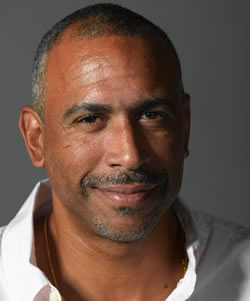Less time for art, science
 and play in kindergarten
and play in kindergarten
In looking at parent reviews of schools in my district I was surprised to see complaints about kids being overly burdened by academics--in kindergarten. "Too much" wrote one parent about the weekly kindergarten homework packet.
A
new study, which compared data from 1998 and 2010, finds that kindergarten indeed became more focused on academics. In comparing how teacher expectations and practices had changed over the time period--before and after the No Child Left Behind act was passed in 2001--the study authors found:
- The number of children reporting daily music instruction decreased by 18 percentage points over the 12-year-period and daily art instruction by 16 points.
- Children in 2010 were twice as likely to be taught reading and math using textbooks, and the daily use of math and reading workbooks increased by 15 percentage points.
- The likelihood that that classrooms have discovery or play areas (such as a science or art area, or a sand table) fell by 20 percentage points.
While the findings were similar across the country, the authors report that they were more pronounced at schools that serve predominantly low-income and minority students. Click here to read the study abstract.
|
|

Pedro Noguera: "We have huge segregation in early childhood programs"
In a recent interview with
Mother Jones, Pedro Noguera, UCLA distinguished professor of education and a
frequent speaker at EdSource events, talks about state and federal efforts to close the achievement gap.
Here is what he said about how to achieve success in publicly funded early education programs:
"Focus on quality, including teacher training and pay. This is one of the challenges that [New York City Mayor] Bill de Blasio speaks about. New York rushed to get students into early childhood programs, but the research is clear that it has to be high quality. What we are giving poor kids now in early childhood is nothing like what we are giving middle-class kids in most places. Middle-class kids get to play, develop their thinking ability. Poor kids are much more likely to get regimentation under the guise of socialization. On top of it, we have huge segregation in early childhood programs. I don't see these patterns changing anytime soon, and that's a big obstacle."
Click here to read more of the interview, including Noguera's thoughts on California's progress toward serving the most at-risk students.
|
Governor offers a new approach for early ed funding
Susan Frey,
EdSource Today
In a potential game changer for how early childhood education is funded in California, Gov. Jerry Brown this week proposed a new block grant that will give districts more flexibility in how they allocate early education funds - similar to the Local Control Funding Formula for K-12 schools.
Funds for state preschool, transitional kindergarten and a
quality rating system would be combined into a $1.6 billion Early Education Block Grant. The total, which contains no increase in funding, reflects what was spent in 2015-16 on those three programs. Districts would then have increased discretion in how those funds are spent. (In addition, he is proposing to turn $570 million spent on a range of child care programs into a voucher program, rather than having some of the funds going directly to program providers through contracts with the Department of Education).
Advocacy groups sounded a cautionary note about the preschool proposal. Ted Lempert, president of
Children Now, said it is too early to apply LCFF principles to pre-K education because the state has no quality standards for these programs to hold districts accountable."The state has a critical role to play in ensuring quality," Lempert said. "Under the proposal, it's all up to the local districts. There is no assurance of quality."
Read more
.
What do you think of the governor's proposal?
L
et us know.
|
Public preschools try to accommodate diverse languages of students
Sarah Tully,
EdSource Today
Preschool programs are playing a key role in helping children who speak languages other than English get ready for kindergarten. More than half of students in Head Start and the California State Preschool Program - the largest ones statewide - speak a language other than English at home.
Throughout California's preschools, a range of languages is spoken, sometimes with many dialects within those languages. Some programs, such as Head Start, aim to employ at least one person who can speak each of those languages, even if only one child in the class speaks it - often a difficult task.
Read more.
|
In a Washington Post interview, Jane Waldfogel, a Columbia researcher, writes that in studying the causes of the U.S.'s achievement gap, she expected to find that poor quality schools were at fault. Instead, she writes, "more than half of the inequality was already there at school entry. The schools are not as much to blame as we had expected. And that's not true elsewhere. The United States really stands out, not just in having more inequality at school, but having more inequality even in early childhood."
Kindergarten teacher Wes Dicken used crowdfunding to raise money for a robotics-based coding program for his young public school students.
|
CHECK OUT OUR RECENT ISSUES
|
|
|
|
|